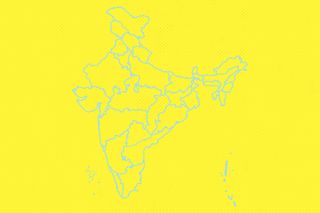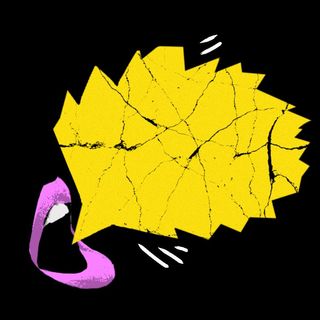
Of All Things, How Did We End Up Debating the Country’s Name?
The ‘India’ vs. ‘Bharat’ debate dominating social media discourse in the country is forcing us to ask: what’s in a name?

“What’s in a name? That which we call a rose, by any other name, would smell as sweet,” goes William Shakespeare’s immortal line from the famous Romeo and Juliet. The Indian saying — “Naam bada ya kaam? (It’s one’s work that matters, not their name)” — means the same. Yet, with the ‘India’ vs. ‘Bharat’ debate dominating social media discourse in the country — polarizing political parties and individuals alike — one is bound to wonder how, of all things in the world, we ended up debating the name of our country more than 75 years after its independence.
Triggered by a G20 invite referring to the country’s President as “President of Bharat,” the controversy has spawned a number of speculations: is the ruling party intent on changing the country’s name in the next session of the Parliament? If so, is this a reaction to the opposition bloc — formed recently by 26 political parties — naming itself ‘Indian National Developmental Inclusive Alliance (I.N.D.I.A)’? Is the language on the invite a politically-driven attempt to do away with colonial nomenclature? Are we simply making a mountain out of a molehill?
While questions abound, two extremely pertinent facts remain rather unexplored. One, ‘India’ isn’t nearly as colonial a term as many netizens would like to believe; yes, it bears a foreign, anglicized twist, but at its core, it’s derived from the name of the river Sindhu — or Indus, as it’s known. It’s a river that is credited with facilitating the development of India’s first civilization by serving a steady supply of water and fertile soil for irrigation. The country’s national anthem — that states, “Punjab, Sind, Gujarat, Maratha…” — refers to that, too.
Two, ‘Bharat’ isn’t actually a novel name that the true patriots of the present day have come up with. The Constitution of India refers to the country as both ‘India’ and ‘Bharat’, and always has; Article I says, “India, that is Bharat, shall be a Union of States.”
Related on The Swaddle:
How Making Fun of Cultural Stereotypes Keeps People From Bonding With Their Communities
So, India was always meant to be known as Bharat, too — with “too,” here, being the operative word, representing the intent of the makers of the country’s Constitution. It reflects one of the traits that makes India stand apart: “unity in diversity,” a term that the government is evidently chuffed to endorse. The fact that the government has also spent between Rs. 2,000 to 3,000 crores on the construction of the ‘Statue of Unity‘ in Gujarat, as a symbol of national pride, speaks to its prioritization of unity. But, “unity” doesn’t mean “homogeneity;” the unity of a homogenous society doesn’t evoke images of nearly the same kind of solidarity as the unity of a diverse society does.
In his book, The Discovery of India, Jawaharlal Nehru, the country’s first Prime Minister had written: “Often, as I wandered from meeting to meeting, I spoke to my audiences of this India of ours, of Hindustan and of Bharata, the old Sanskrit name derived from the mythical founders of the race.” So, indeed, a number of names have long co-existed — formally or informally — for a country as vast and as diverse as India.
Any move forcing citizens to reckon with just one name, then, strikes at the heart of the diversity that makes India’s unity inspiring. And so, even prioritizing one name over the other — let alone doing away with one completely — simply due to political motives, would be a rather selfish move. Perhaps, even an anti-patriotic one.
According to social scientist Catherine Clémentin-Ojha, ‘Bharat’ refers to the “supraregional and subcontinental territory where the Brahmanical system of society prevails,” and is derived from ‘Bharatvarsh,’ going back to the Hindu epic, Mahabharata. This makes ‘Bharat’ more of “a religious and socio-cultural entity, rather than a political or a geographical one.” This suggests that the suspected move to change the country’s name is in furtherance of making the country’s geography sound more “Hinducentric,” as NPR described this trend of renaming a number of cities and towns in a bid do away with colonial markers and Muslim heritages.
Related on The Swaddle:
How Did Yoga Become Soft Power?
Besides downplaying the country’s diversity, then, a change in the very name of the nation also attacks two values enshrined in the Constitution: secularism and equality. Yet, proving that facts are stranger than fiction, this absurd, dystopian debate rages on — even with the country having arguably bigger problems to deal with than changing its name.
But if a change of name is truly on the cards, there’s little to placate the citizens that the aftermath wouldn’t herald a logistical nightmare. Let alone updating millions of official documents bearing the stamp of the Government of India, everything — from currency notes to government-issued identity documents — might be forced to undergo a facelift. Indian citizens’ passports and voter IDs alone carry the distinction of being issued by the “Republic of India” and the “Election Commission of India,” respectively. One is bound to wonder, then, whether the repercussions of a move so drastic will be as traumatizing as the government’s demonetization move in 2016 that, reportedly, cost 33 citizens their lives. Will there be better planning this time?
Amid the flurry of questions floating on social media, one, however, is easily answered: will the Constitution allow a change in name? The simple answer is: yes; the process, however, wouldn’t be a simple — or an inexpensive — one. Besides requiring amendments to the Constitution itself, it would also present the massive legislative exercise of renaming laws that refer to the country as ‘India.’ And, as Aman Lekhi — the former Additional Solicitor General of India in the Supreme Court, who also happens to be married to Meenakshi Lekhi, current Minister of State for External Affairs and Culture of India — told FirstPost: “The change is possible but is it necessary?” He added that “there are certain things that should be free of controversy and the name of the country should be highest on that list.”
But, in the end, all said and done, one question still remains: if the country is indeed renamed, can every Indian citizen truly reckon with a change in the terminology of their national identity as swiftly as a parliamentary session might? Or, is a collective, national identity crisis on its way — dooming Indian citizens?
Devrupa Rakshit is an Associate Editor at The Swaddle. She is a lawyer by education, a poet by accident, a painter by shaukh, and autistic by birth. You can find her on Instagram @devruparakshit.
Related


The Psychology Behind Saying Hurtful Things We Don’t Mean
